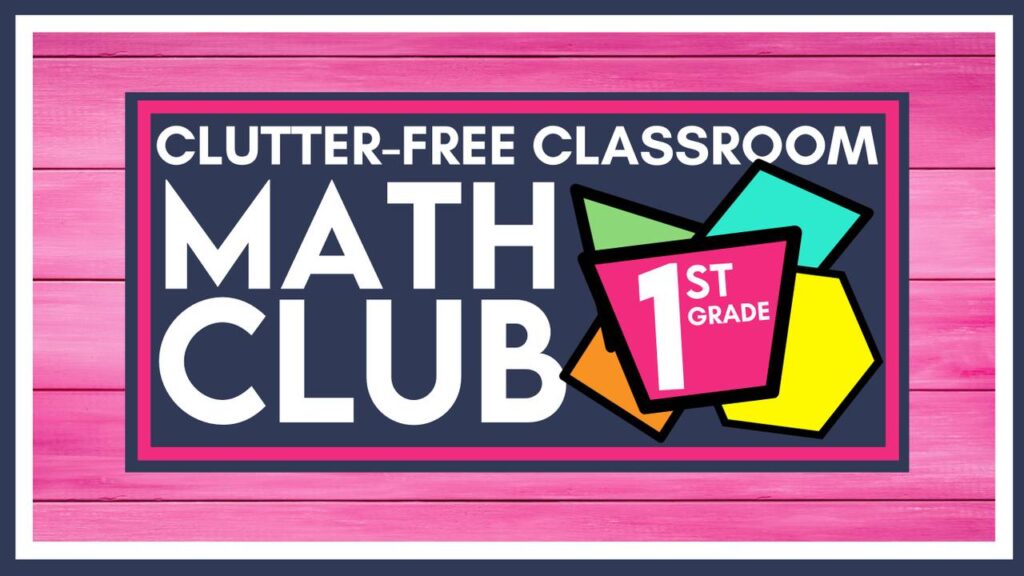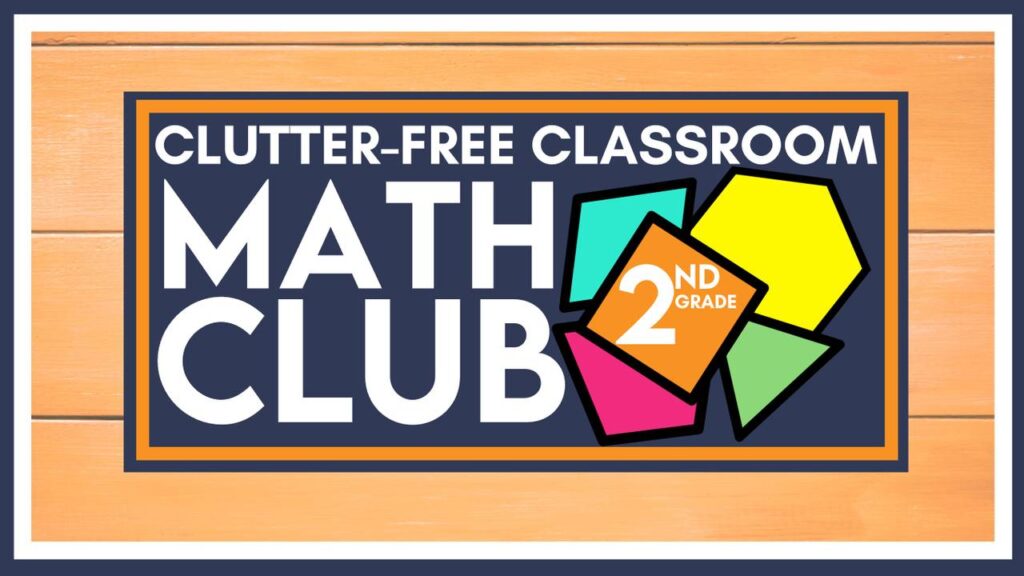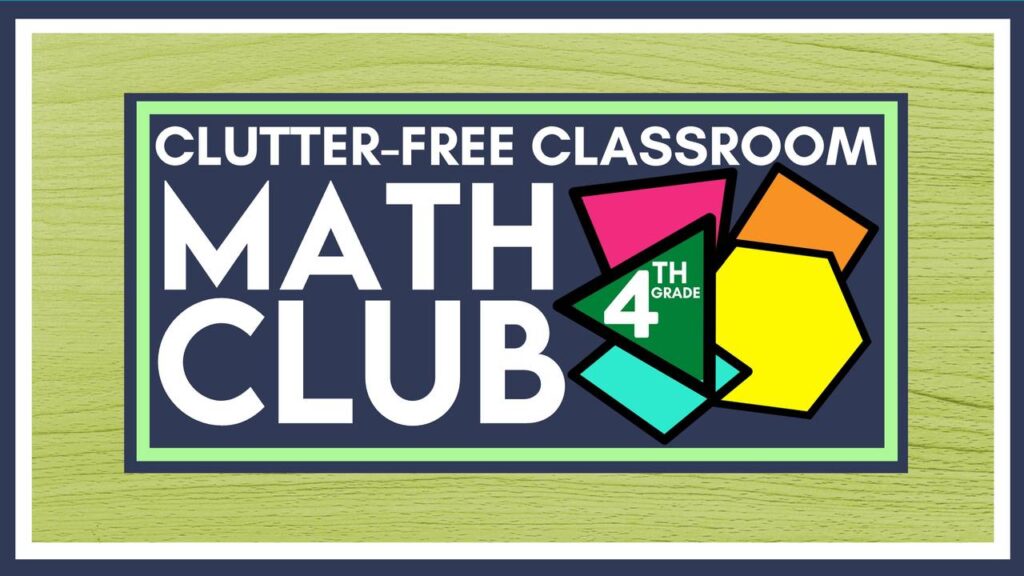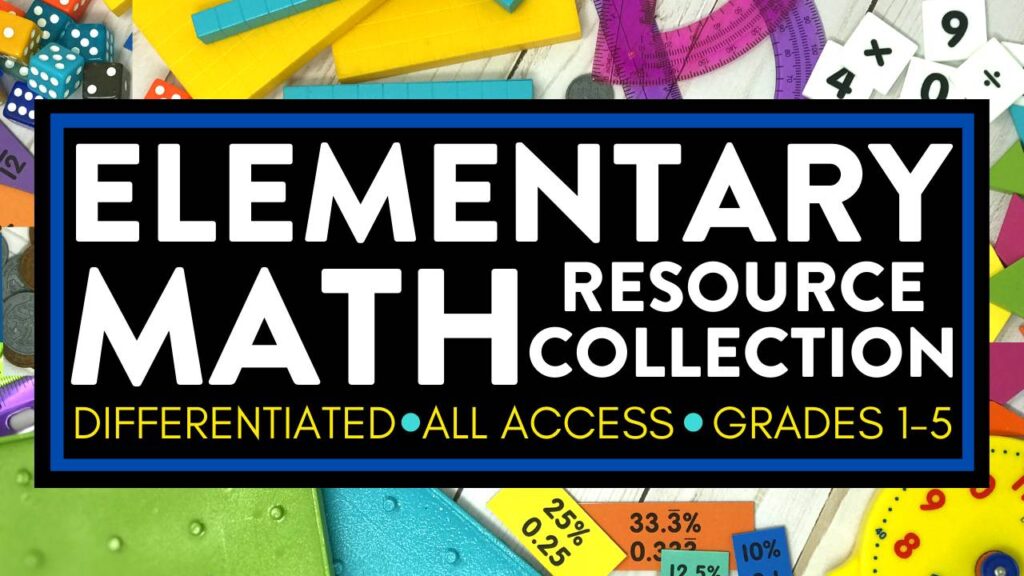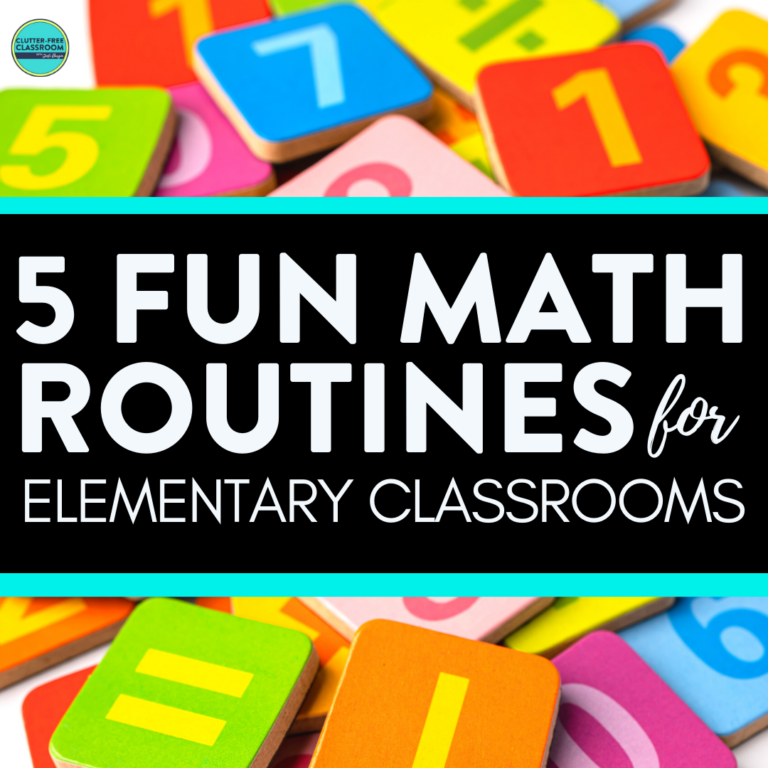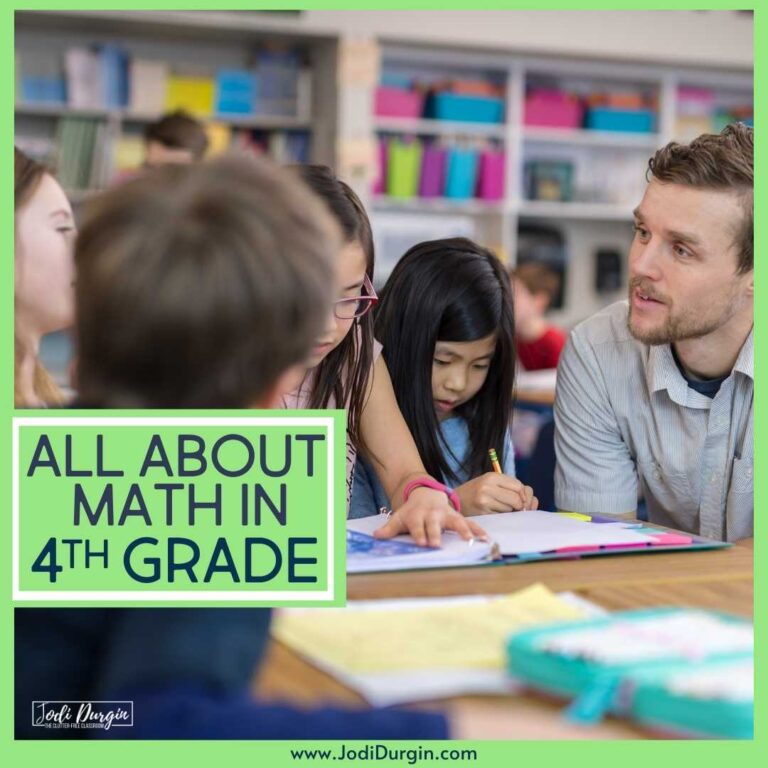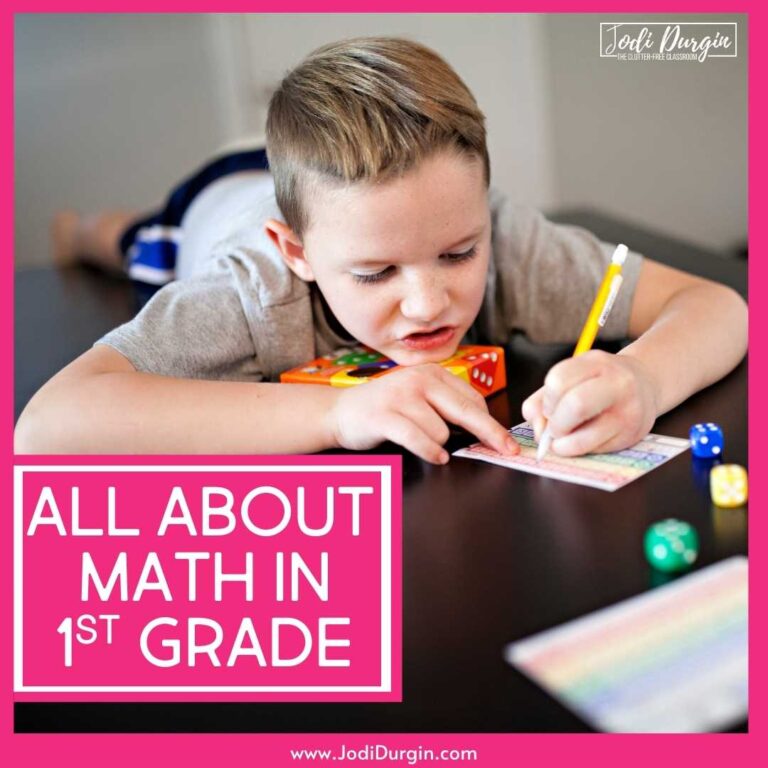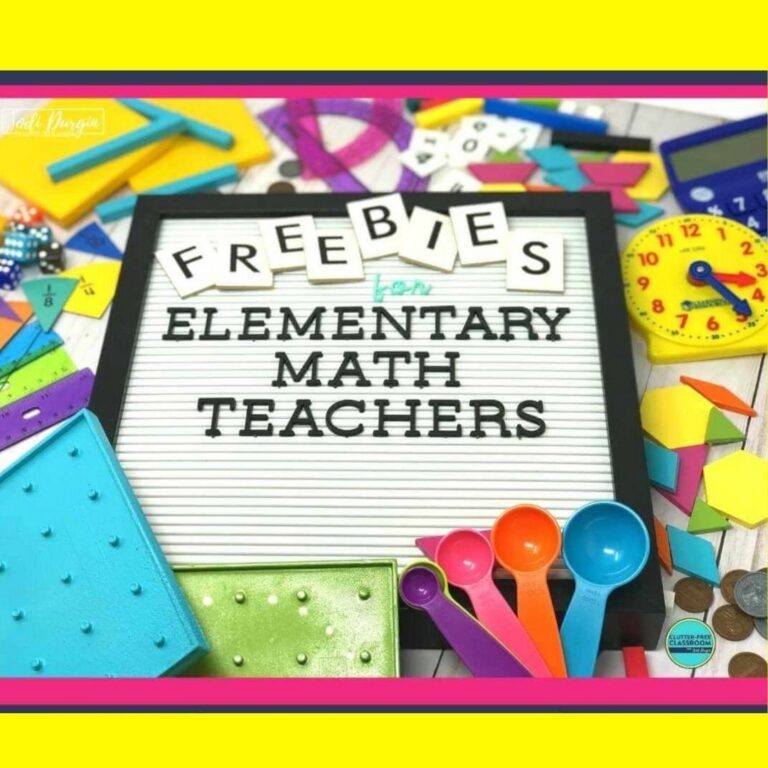Are your elementary students lacking enthusiasm about math? This might sound like groans or silence and look like kids zoning out or being off task. One strategy you can use to increase engagement and get your students excited about math is by discussing how what students are learning applies to the real world, using some of the project based learning ideas below, and engaging in project learning activities in your classroom.
Exploring math in the real world through project based learning makes math and learning meaningful to students, which results in them being more invested in their learning and having better learning outcomes. We love to see both of those things happen!
There are so many opportunities to investigate math in the real world within the grades 1-5 math curriculum. For example, topics such as addition, subtraction, multiplication, division, money, area, perimeter, measurement, and analyzing graph data (just to name a few) all easily lend themselves to really interesting class discussions. Math will quickly become both you and your students’ favorite part of the school day when you implement the project learning ideas below!
This blog post will address the following questions:
- What is real world math?
- Why is real world math important?
- Can you give some real world math examples?
- What is Project Based Learning?
- What are the characteristics of Project Based Learning?
- How are Project Based Learning and Problem Based Learning different?
- What is the difference between Project Based Learning and Inquiry Based Learning?
- Can you share some Project Based Learning ideas and examples?
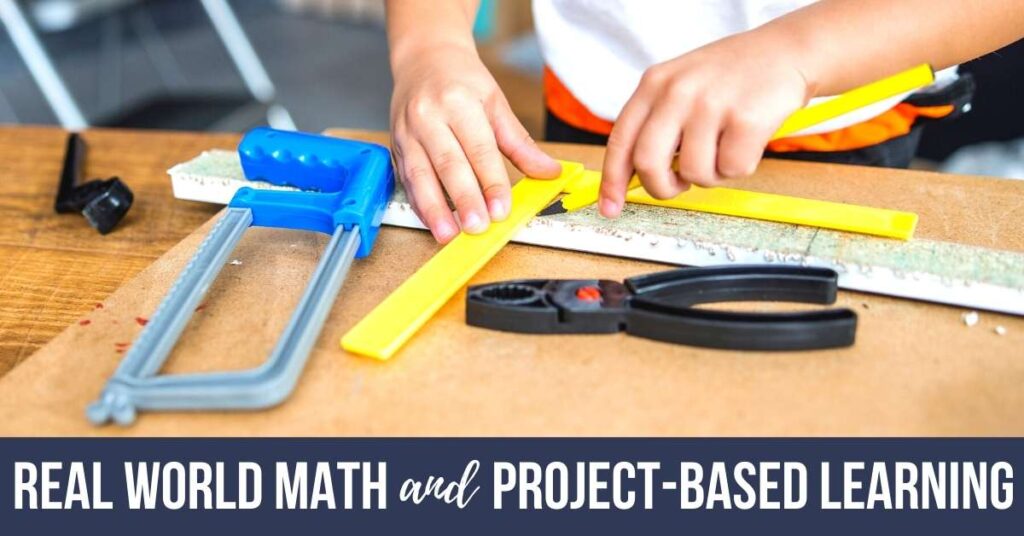
What is Real World Math?
Real world math is the concept of bringing real world situations and experiences related to math into your classroom. It can be as big as students engaging in powerful learning experiences where they learn about the world around them (project based learning activities). However, it can be as small as making connections to the real world when learning about concepts and skills.
Why is Real World Math Important?
Real world math is important because it…
- brings meaning to math.
- builds students’ understanding of the real world application of math.
- supports students in making connections between math and the real world.
- offers authentic experiences.
- increases student engagement.
- invites students to understand why they are learning what they are learning.
- boosts higher order thinking skills.
- strengthens critical thinking skills.
- provides teachers with an assessment tool to determine if students have a conceptual understanding of math topics.

8 Math in Real Life Examples You Can Use in Your Classroom
Here is a list of 8 math in the real world examples:
- Display documentaries related to a concept or mathematician.
- Use primary source documents to teach about the history of math.
- Create learning experiences based on current events and trends.
- Provide opportunities for students to participate in dramatic play and simulations.
- Invite guest speakers that use math in their career.
- Share real math situations you are facing in your personal life to your students. For example, if you are doing a kitchen remodel and need to order tile, then invite your students to help you determine how much tile you need to purchase.
- Facilitate opportunities for students to present their work to peers, teachers, administrators, parents, and the local community.
- Begin using project-based learning.
What is Project Based Learning?
Project Based Learning (PBL) is a teaching method where a teacher poses a real world problem and complex question to students. The problem and question must be both authentic and engaging. Project-based learning activities are a great way to implement real world math in your classroom.
In addition to this project equipping students with a deep understanding of the math content, it also gives them opportunities to strengthen their problem solving, critical thinking, collaboration, and communication skills. These skills are essential for students to develop and refine for their future.
Students work on the project over an extended period of time (week, month, or semester). Some important components of the process are student choice, inquiry, innovation, and meaningful feedback. When students come to the conclusion of their project, they present it to a real audience (peers, teachers, administrators, parents, and the local community).
What are the Characteristics of Project Based Learning?
Project based learning must include the following characteristics:
- Student Autonomy: Students demonstrate autonomy throughout the learning experience by engaging in decision making during their learning. They can seek support from the teacher as needed, but they primarily are working independently on the task. Teachers take on a supportive role.
- Interdisciplinary: Students work on concepts and skills across content areas: Reading, writing, math, science, etc. Students must pull from their prior knowledge across disciplines to accomplish the project.
- Real World Application: Students apply previously taught skills to an authentic real world situation that has meaning to them.
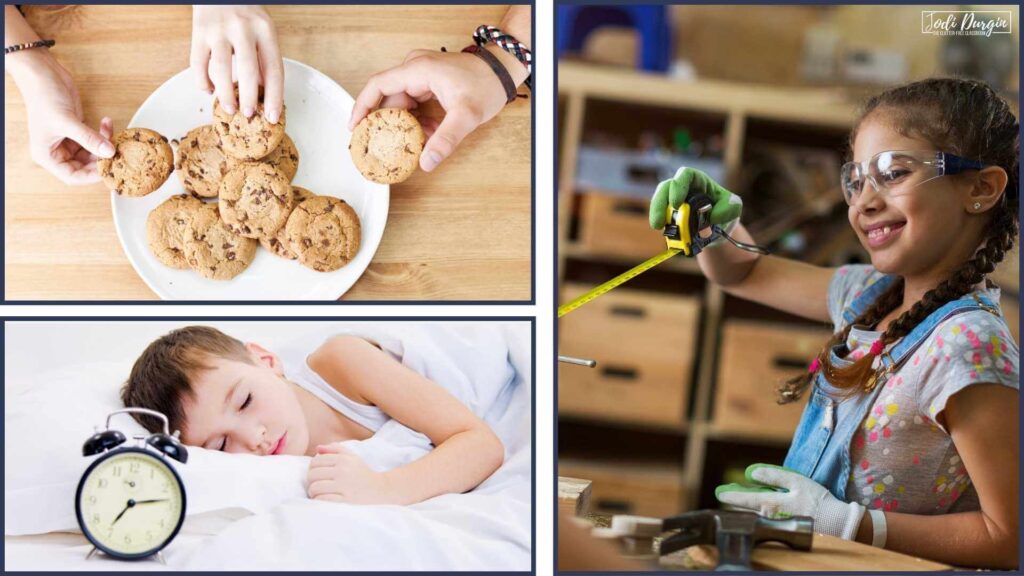
What is the Difference between Project Based Learning and Problem Based Learning?
Project Based Learning and Problem Based Learning are very similar, but they are different in that project based learning is always a long term, interdisciplinary project, whereas problem based learning can be a short single-subject task.
What is the Difference between Inquiry Based Learning and Project Based Learning?
Project Based Learning and Inquiry Based Learning are also very similar, but one difference is that inquiry based learning is most often used with science, whereas project based learning is most often used with ELA and social studies topics.

What are Some Examples of Project Based Learning?
Here are 2 examples of project based learning activities that will help you incorporate math in real life into your curriculum:
- Hot Cocoa Project Based Learning Activities: Elementary students will LOVE creating their own Hot Cocoa Business as they work through these engaging Project Based Learning Activities. What a fun and creative way for 3rd or 4th grade students to practice their math and writing skills during the cold winter months! Printable and digital versions are included.
- Valentines Day Project Based Learning Activities: These February PBL activities will engage your 2nd, 3rd, or 4th grade students as they practice their math and writing skills. As part of this project, students take on the role of bakery owners selling Valentine’s Day Cookies. The activities are both printable and digital.
Math Resources for 1st-5th Grade Teachers
If you need printable and digital math resources for your classroom, then check out my time and money-saving math collections below!
Free Elementary Math Resources
We hope these tips and ideas for implementing math in the real world through these project based learning ideas will be helpful as you plan your upcoming math lessons. We would love for you to try these math resources with your students. They offer students opportunities to practice grade level concepts and skills in fun and engaging ways. You can download worksheets specific to your grade level (along with lots of other math freebies) in our free printable math resources bundle using this link: free printable math activities for elementary teachers.
Check out these other math resources!
- 1st Grade Math Resources
- 2nd Grade Math Resources
- 3rd Grade Math Resources
- 4th Grade Math Resources
- 5th Grade Math Resources


